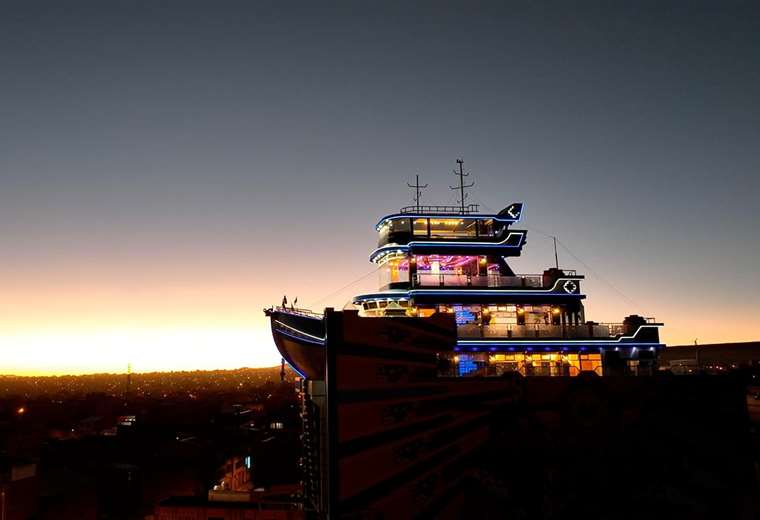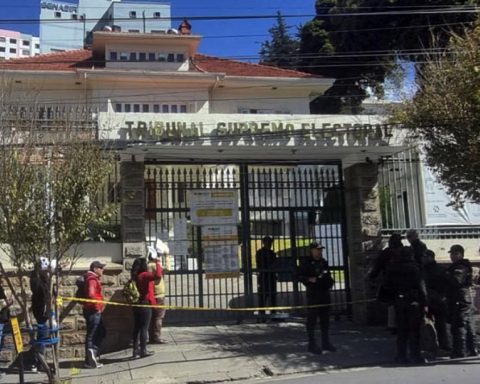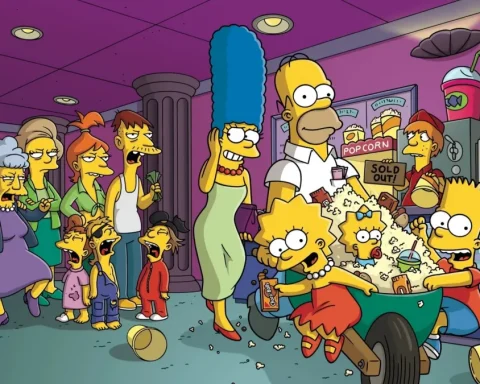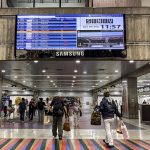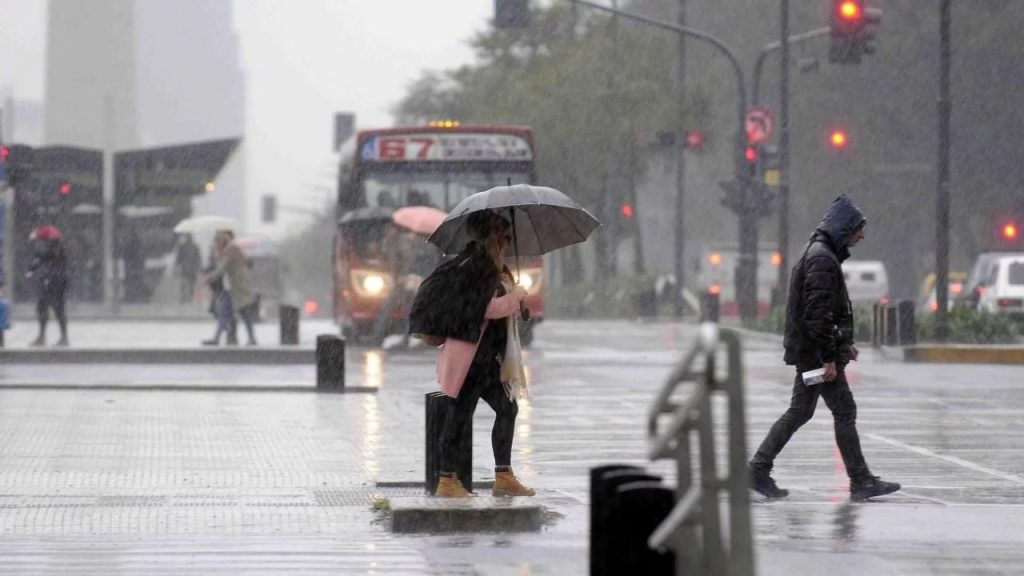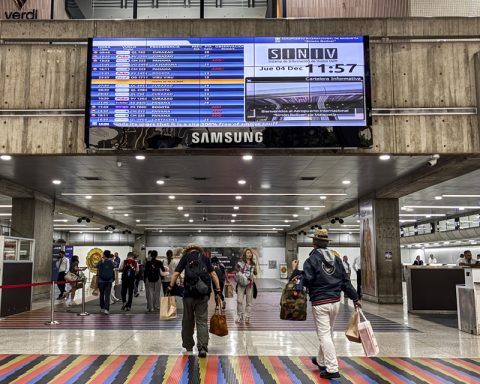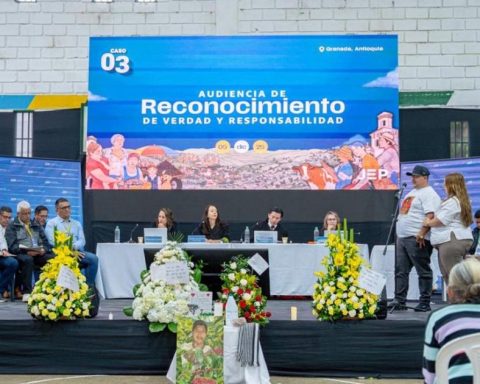August 30, 2024, 9:17 AM
August 30, 2024, 9:17 AM
From a distance, the “Crucero de los Andes”, better known as “The Titanic”, Freddy Mamani’s most recent creation, captures the gaze of passersby. A ship looms overhead and, as it approaches, the colors, murals and details captivate visitors, who can walk through the building floor by floor until they reach the boat, from whose bow there is a panoramic view of the city of El Alto, a change in the traditional trend that closed the top floors of buildings for the owners.
“In the past, the trend was for cholets to reserve the upper floors for the owners’ families, closing off access to visitors. The new trend is to open up these areas and allow visitors to have the full experience. This means a more tourist-focused approach, allowing the entire population to visit these upper floors, and, in addition, the buildings are now more thematic, as is the case of the “Crucero de los Andes” cholet (better known as Titanic),” explains the architect who initiated this constructive and stylistic movement, Freddy Mamani.
The architect participated in the discussion, “Architectural tourist icons of El Alto”, organized by the Center for Research, Innovation and Digital Transformation in Tourism (CIINTUR), of the Franz Tamayo University, Unifranz, in which he shared his experience and spoke about the origin, future and new trends of this architectural movement “Made in El Alto”.
Academics, authorities and building owners also participated in the discussion, under the premise of proposing guidelines and actions to promote tourism in El Alto through the cholets circuits.
The cholets are buildings with “ajayu” (soul), open to visitors, care for tourists and a strong emphasis on the concept of thematic design and are projected as the main tourist attraction of the city of El Alto for the world.
The Crucero de los Andes is made up of 11 floors. The first two are an event hall and the third floor will be the option for lodging; a restaurant and even a gym are also planned. Each floor was specially designed with a theme; for example, on one of these you can see finishes that evoke the Tiwanaku culture; there is even a replica of the Puerta del Sol.
At the top you can see a bow identical to that of a ship, from which you can see the city of El Alto in 360°. Víctor Choque, owner of the cholet, indicates that, at first, the ship was not planned, but that Mamani convinced him by pointing out that without this last detail, the building would end up like “a finely dressed and bejeweled chola, but without a hat.”
The architect who started the movement says that it was born in 2003, with some of his constructions, which follow some guidelines that are maintained to this day and have been replicated by other architects.
“At first, as a builder, I followed the guidelines given to me by the clients and made suggestions. Little by little, the style took on a life of its own and the framework on which almost all the cholets are built was created. We incorporated Andean elements and combined them with modern elements and color, reflecting the life and aspirations of the people of El Alto,” says Mamani.
The cholets are made up of four main areas: on the first level there are commercial premises, which generate income for the family that owns them; on the middle floors there is a party hall, which also generates income; while on the upper floors there are apartments for family members and on the top floor, a “chalet” in which the owners live.
This structure allows the building to be self-sustaining and pay for itself over time.
The initiator of the trend points out that there are currently at least 70 of his buildings in the city of El Alto, as well as another 30 in other cities and countries. Mamani adds that he considers each one of them as a child, which has its own soul, a particular “ajayu”.
“All the buildings I have built are like my children, they are my kids and they have all been built with the same love, that is why I say that these buildings have ajayu, they have a spirit and life, movement, in this case economic movement. These buildings are self-sustaining over time, their layout allows for that, a commercial floor, a floor that is the party hall, the private areas and the chalet on the upper floor allow the building to sustain itself economically,” he says.
Fernando Villagra, master’s degree holder and director of the Hotel and Tourism Administration program at Unifranz, points out that this sector holds enormous potential for tourism in El Alto, since it is estimated that there are a total of 200 cholets in the city of El Alto, however, there is no real calculation or geolocation, a pending task in which the academy must participate and promote in order to take advantage of its impact.
“Currently we do not have a theoretical framework on this architectural trend, nor do we have updated information on where they are and how many there are. We know that there are approximately 200 buildings spread across various areas of the city, but it is necessary to systematize this information and compare it. To do this, it is important for the academy to generate research and make it available to other tourism stakeholders, so that its impact on tourism in the city can be enhanced,” explains the academic.
Wilson Sangalli, head of the Tourism Unit of the Autonomous Municipal Government of El Alto (GAMEA) agrees and points out that through academic research and the coordination of all actors, the necessary actions can be taken to ensure that cholets tourism reaches its full potential.
“For the moment, tourism is moving without a head and we need guidelines, for this the Municipal Tourism Plan is being developed. For this plan, actions and measures are being developed in the short, medium and long term, based on which we will have a direction to follow and we will establish the policies, programs and actions that are needed, but for this we need the support of operators and universities so that they can generate the necessary data to make decisions and generate actions,” he explains.
